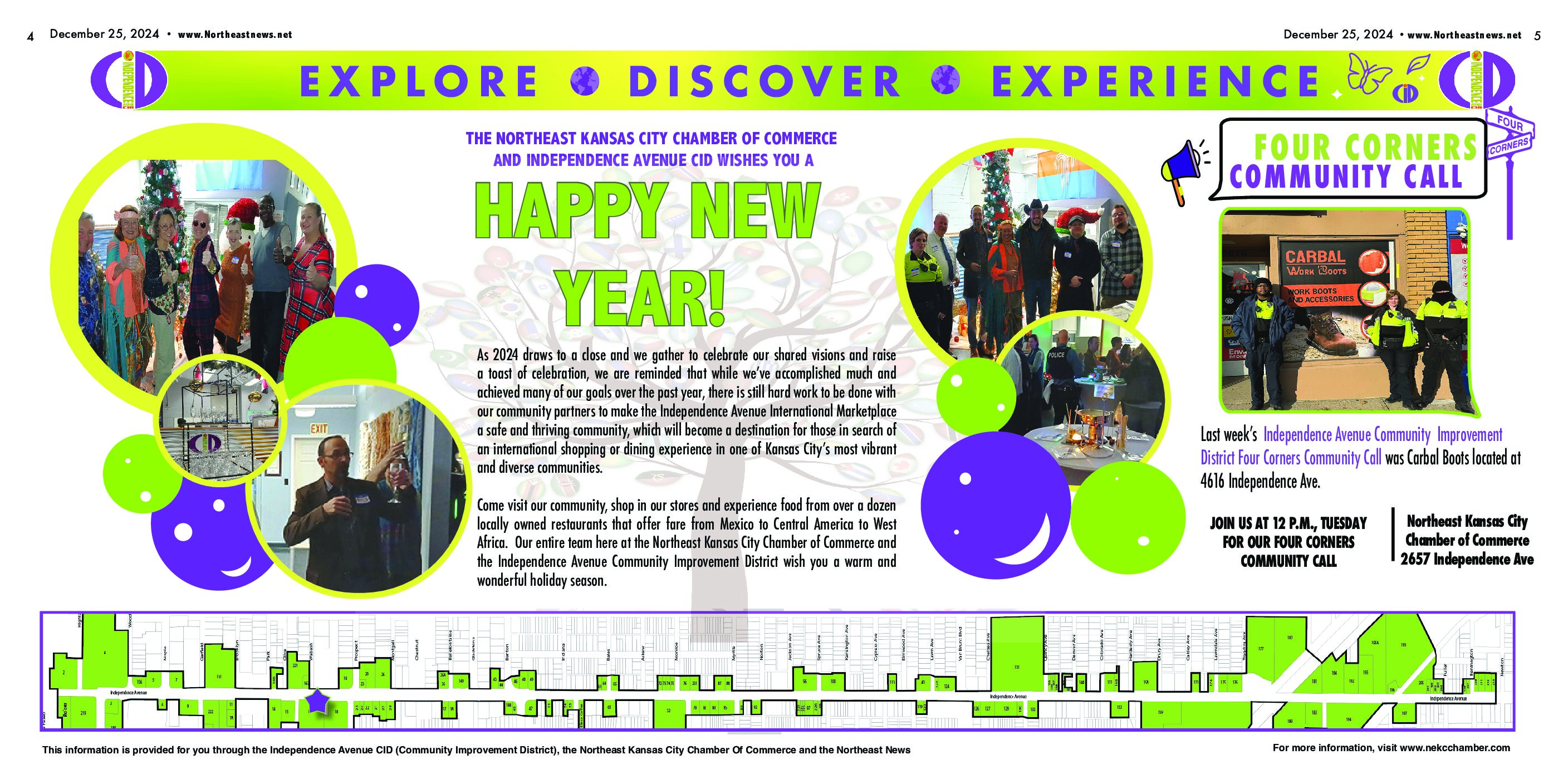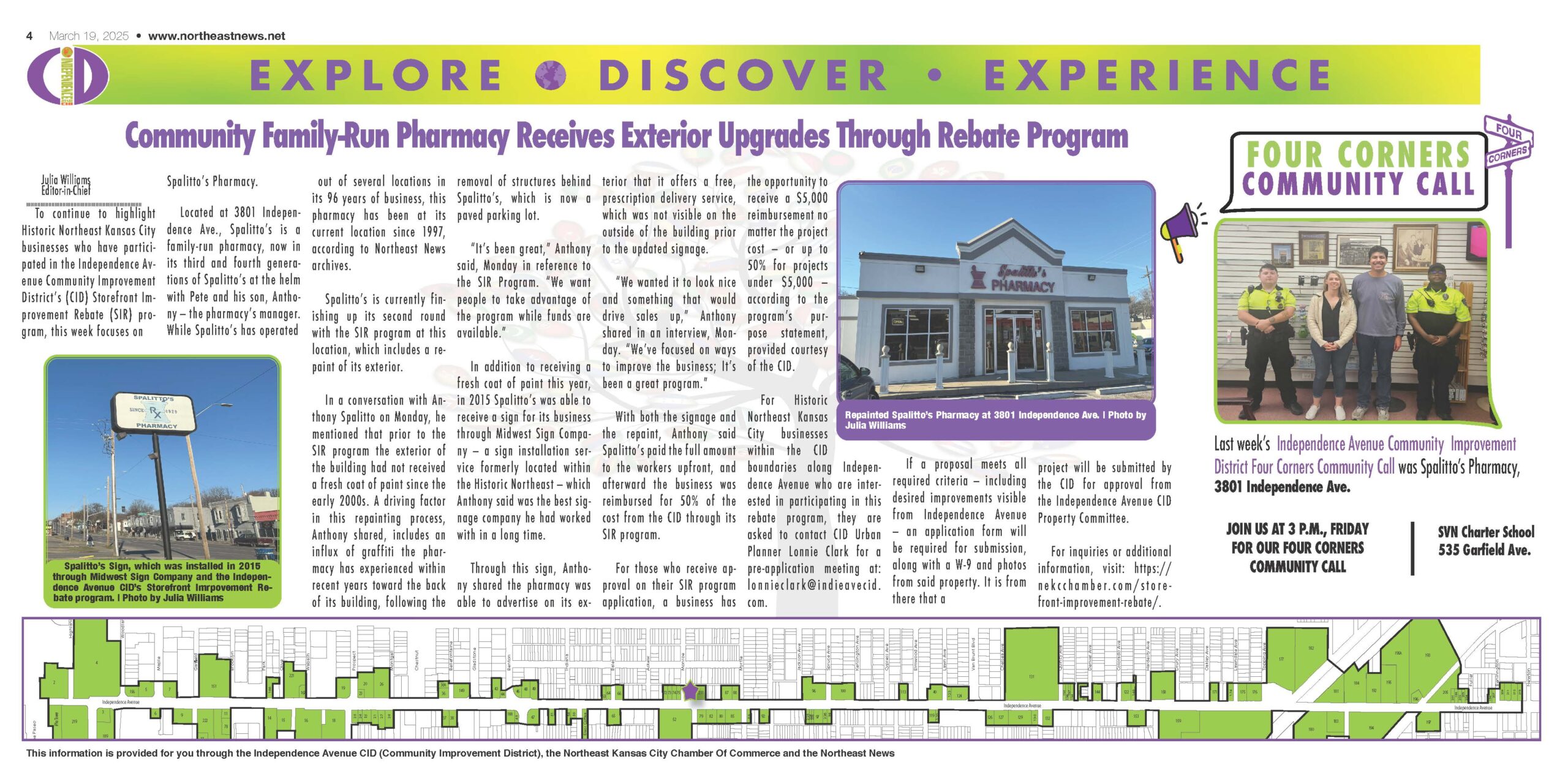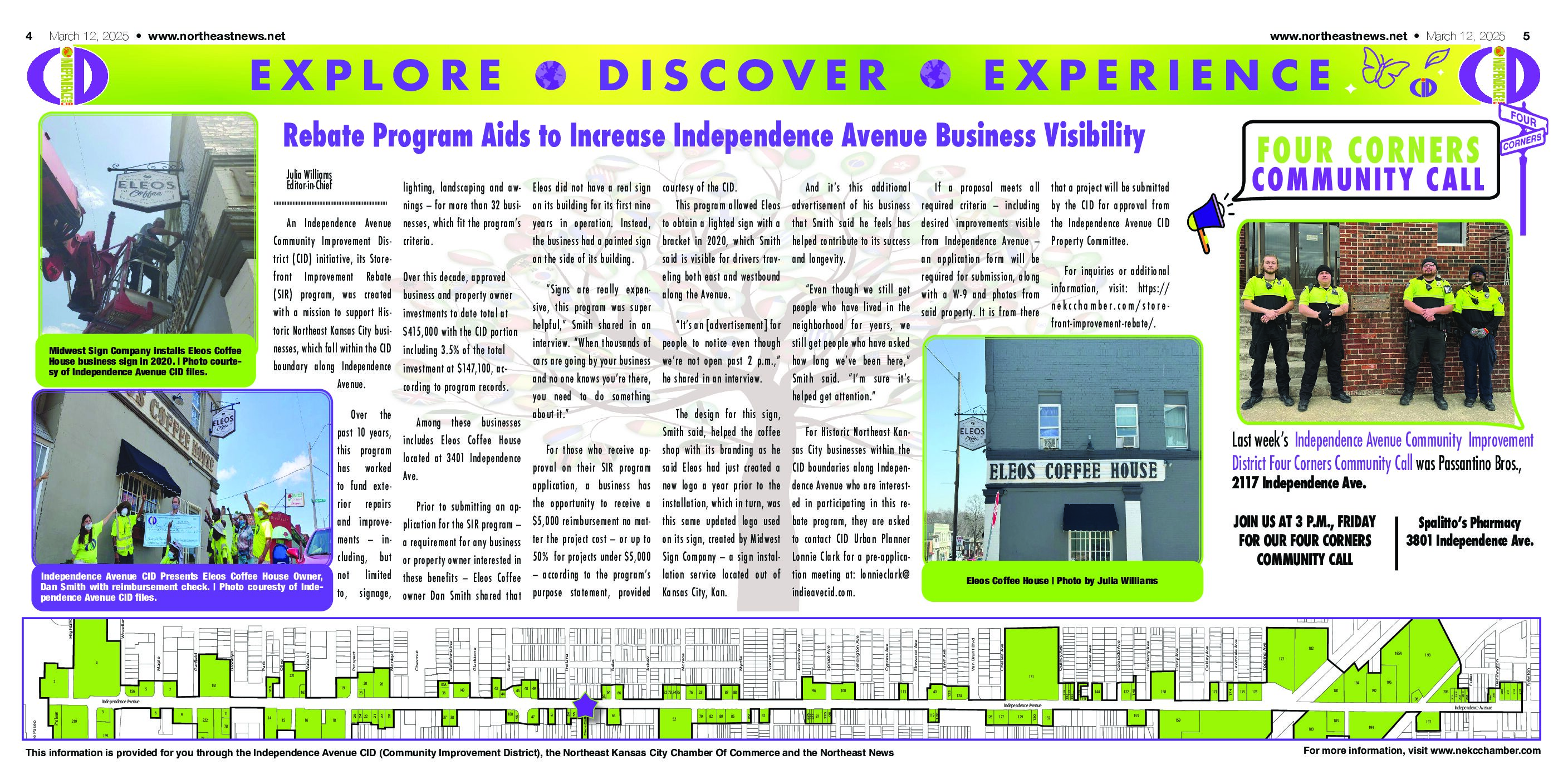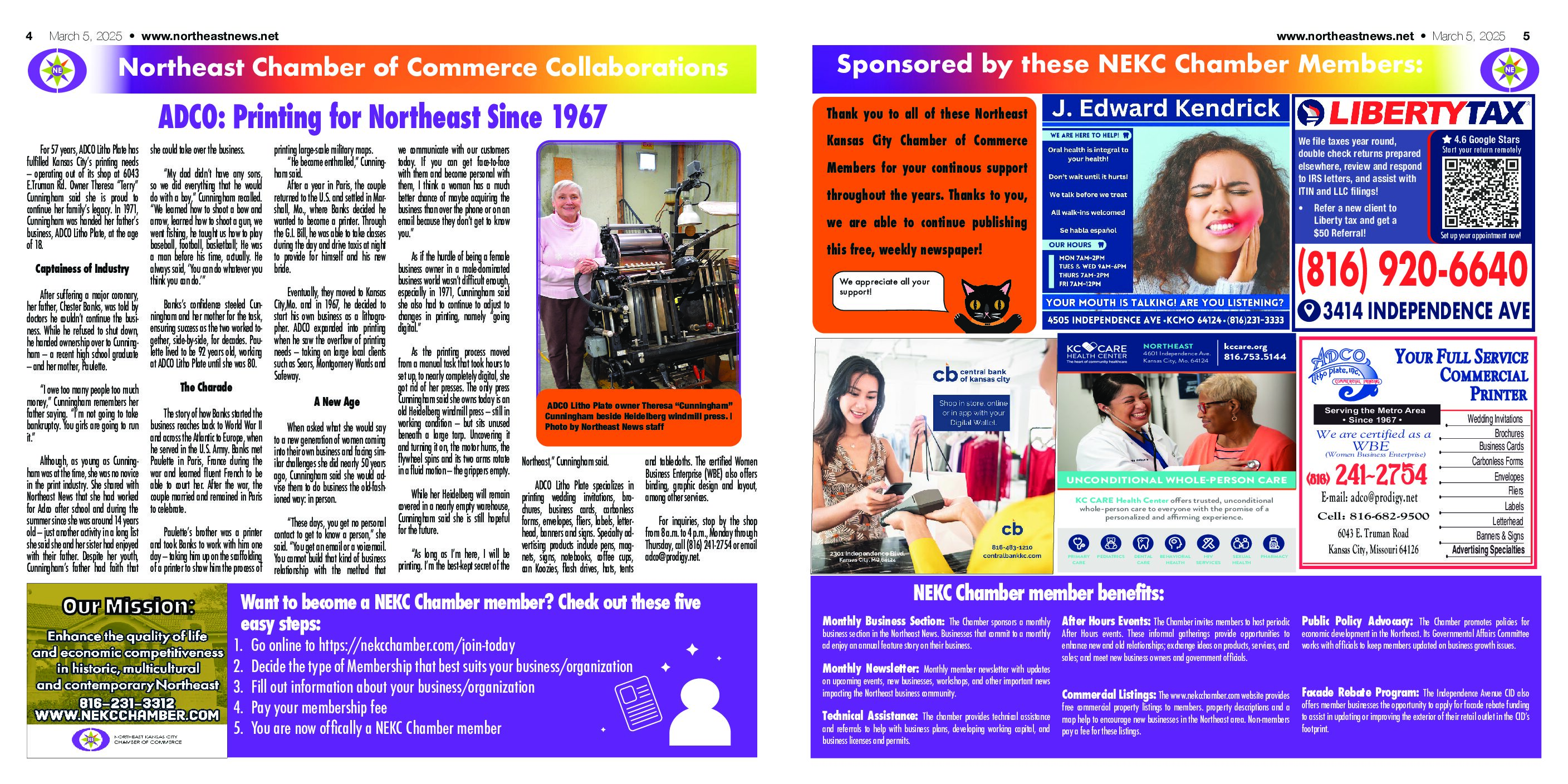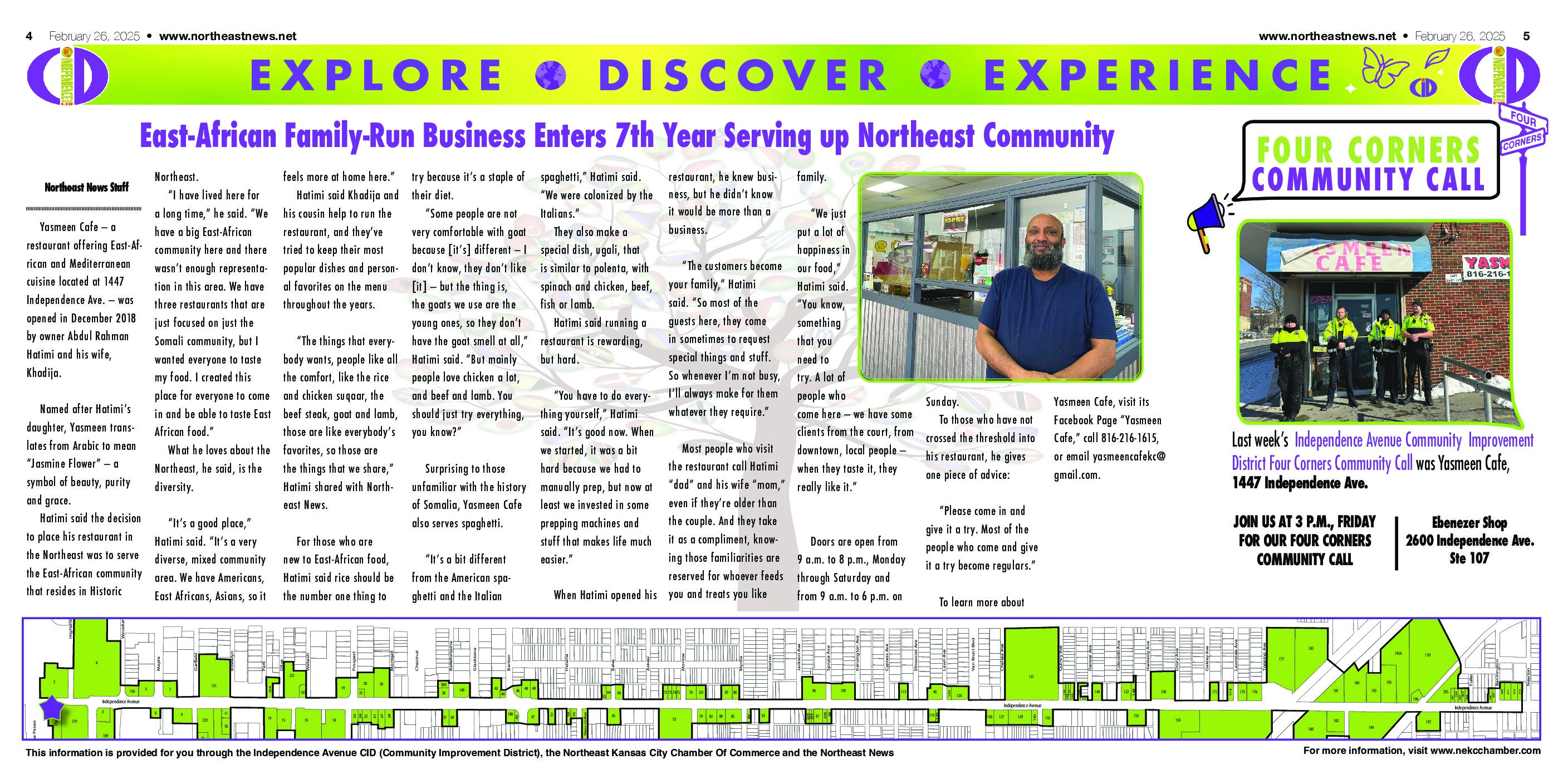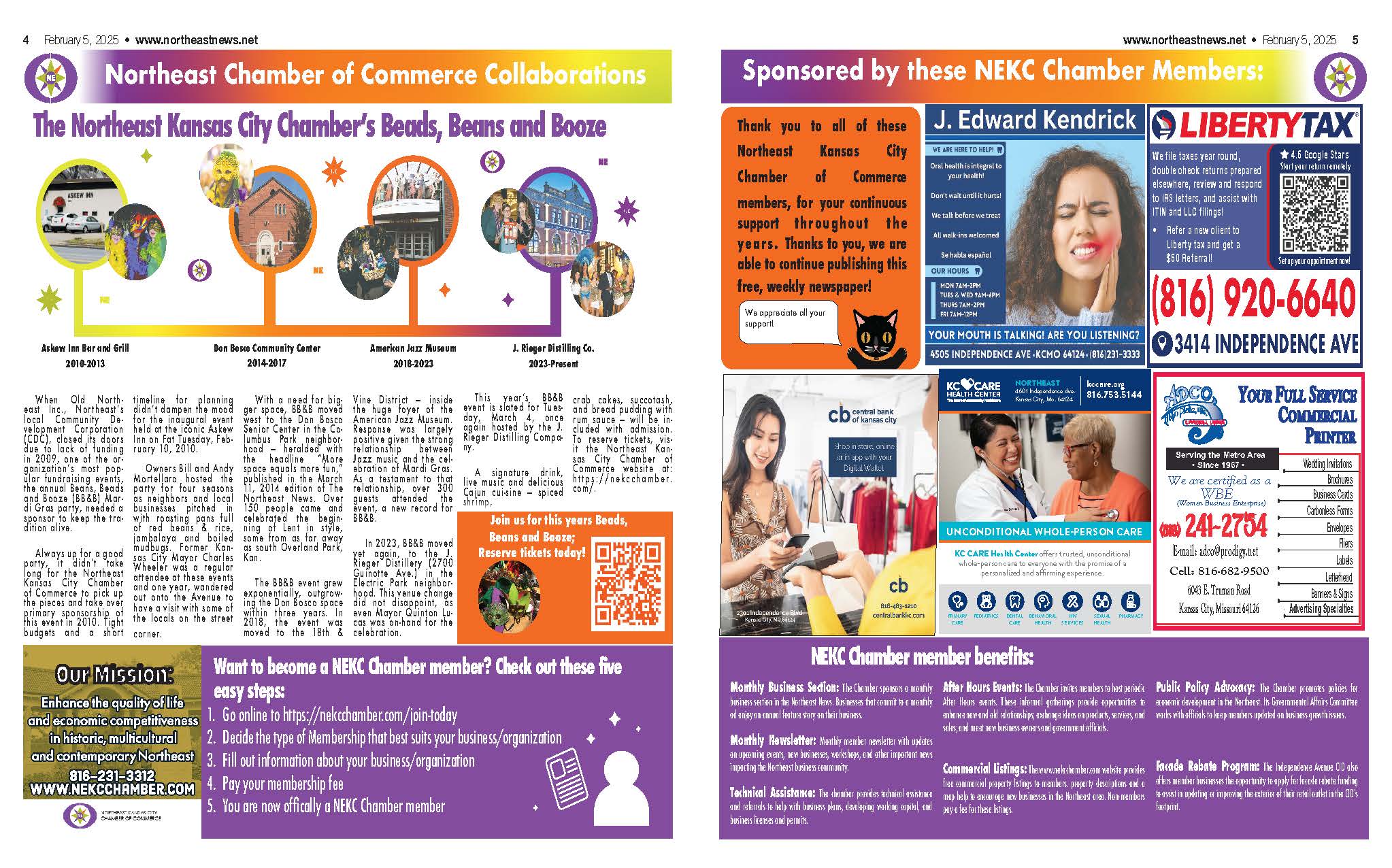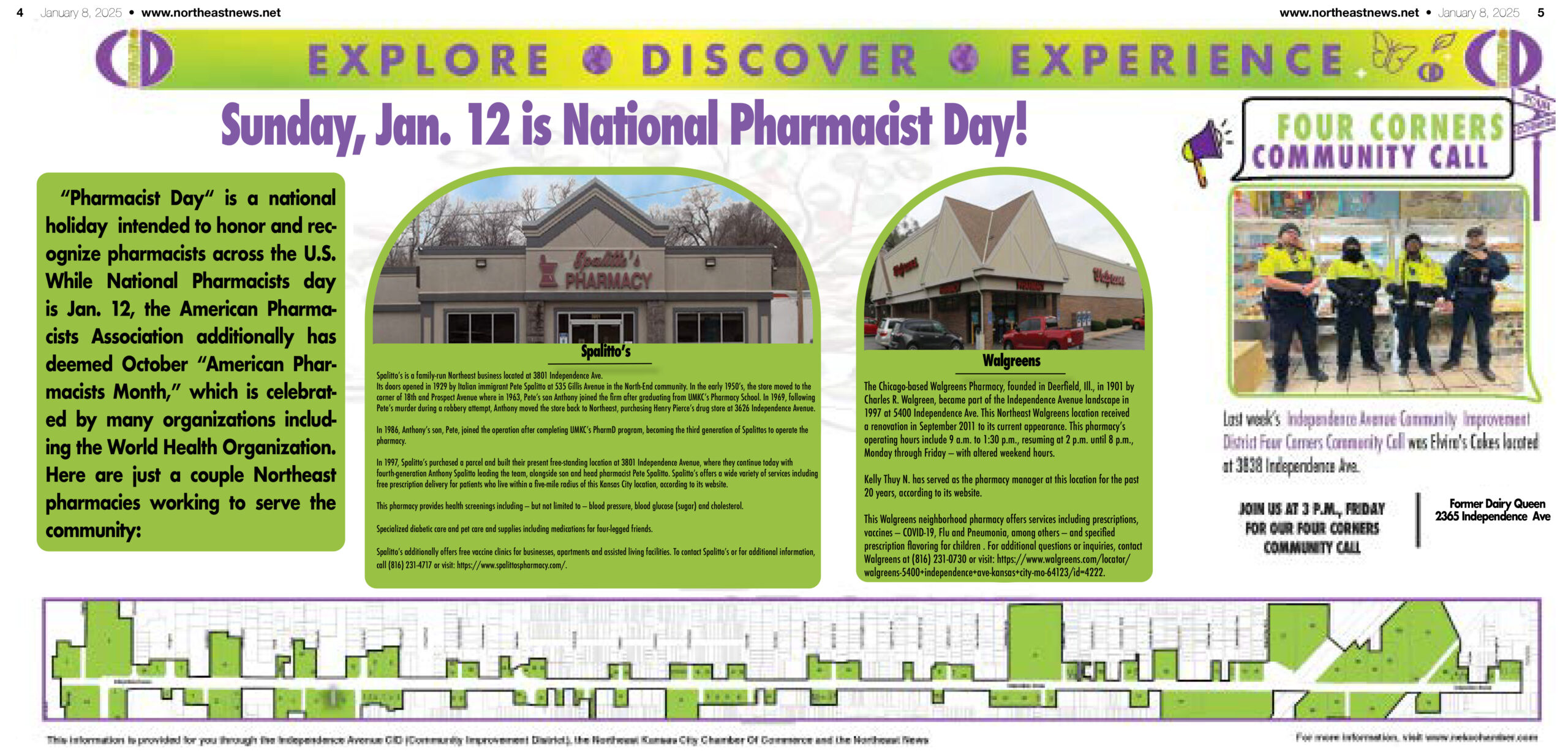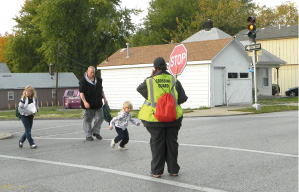
By LESLIE COLLINS
Northeast News
October 24, 2012
Kansas Citians didn’t stay silent about the city’s proposal to remove traffic signals at 37 intersections and replace them with stop signs.
One by one, traffic signals began blinking red and residents informed city council members they were seeing red in more ways than one.
City council members received so many phone calls that it prompted City Council member Jermaine Reed to draft a resolution to remedy the issue.
City council members approved the resolution Oct. 18, which outlines how the city failed to communicate its plans and engage affected neighborhoods and how the city needs to garner citizen feedback moving forward.
In addition, the resolution suspends the removal process of traffic signals until the city manager drafts a “comprehensive plan for engaging the community” and asks the city manager to re-evaluate the 37 intersections to determine if removing the traffic signals poses pedestrian safety concerns. City Manager Troy Schulte will report back to the council in 60 days.
During the Oct. 18 City Council Business Session, members agreed the city failed to communicate its plans to citizens.
“This was a bad communication plan on the front end; we’ve all agreed to that,” Mayor Pro Tem Cindy Circo said. “What we need to do and we’re doing it here is identifying those things that we can start saying, ‘This is what we need to do better.'”
In Historic Northeast, the city’s Public Works crews began installing stop signs and changing the signals to flash red Sept. 26. Affected Northeast intersections include: St. John and Van Brunt Boulevard; St. John and Belmont; and St. John and Hardesty. Pedestrian signals changed to flash yellow located near neighborhood schools include St. John and Topping and St. John and Quincy. Those two signals have been deactivated.
When Kansas City Public Schools Board of Education member Joseph Jackson heard about the changes, he questioned who made the decision and why. At least 11 of the 37 intersections are in school crossing areas, he said. When he contacted city officials, they told him they contacted the principals of schools that would be affected.
“It was later found out they didn’t talk to any principals,” he told Northeast News.
Explanation of traffic signal removal
City Council member Michael Brooks said he’s heard three different reasons for removing the traffic signals and wanted an explanation.
Director of Public Works Sherri McIntyre referred to the Manual on Uniform Traffic Control Devices (MUTCD) and said that each state must conform to the standards issued by the MUTCD.
“This is the guidance we’re using as we recommend taking out the signals,” McIntyre said. “None of these (37 traffic signals) meet any requirements that allow us to put traffic signals in.”
To justify installation of a traffic signal, an intersection must meet at least one of nine warrants, which evaluate four and eight-hour vehicle counts, pedestrian volume, vehicle counts during peak hours, accident history, school crossings, among others.
Over the years, traffic and pedestrian counts have decreased at the intersections and traffic signals are no longer warranted, she said.
“Our only reason to take these out is they don’t meet traffic warrants,” she said.
Northeast News contacted Doug Hecox, spokesperson with the Federal Highway Administration, for further clarification.
Hecox said the MUTCD does not mandate that a traffic signal be removed if it no longer meets warrants.
“The MUTCD is an essential document that transportation professionals around the country rely on,” Hecox said. “It consists of a variety of requirements and it also contains a number of recommendations. The overarching important message here is that it offers a good degree of latitude to local officials who make the local decisions because circumstances at intersections along streets vary significantly from community to community and certainly vary over time as communities and neighborhoods change.
“The local offices (in Kansas City) are acting in accordance with what they believe to be the right and appropriate choice and the MUTCD allows that.”
Currently, the city has 604 traffic signals and 245 have been evaluated through traffic studies. Of those, 144 are out of warrant signals. Public Works plans to evaluate the remaining traffic signals during the next 18 months.
Three of the 37 signals have already been removed from intersections at 12th and Spruce/Jackson; 12th and Bennington; and 24th and Hardesty.
The first 37 traffic signals slated for removal are aging electro-mechanical signals that are 50 to 60 years old, said Sean Demory, spokesperson for the Public Works Department.
“They are signals not easily integrated into the rest of the traffic control network, which is one of the warrants. They are signals that are increasingly difficult to repair or find parts for,” Demory said.
Upgrading the 37 traffic signals to industry standards would cost $9 million, McIntyre said. Those upgrades would include installing new controllers, mast arms and accessible pedestrian signals (APS), which communicate crossing timing to pedestrians both visually and audibly, McIntyre said.
The MUTCD does not require traffic signals to have accessible pedestrian signals. However, the United States Access Board, a federal agency committed to accessible design, is proposing guidelines to require that newly constructed or altered portions of public rights-of-way include APS. Public hearings are currently being held regarding the proposed guidelines. The proposed guidelines are expected to eventually be implemented as standards.
Removing the traffic signals also saves the city in maintenance costs. Each traffic light costs approximately $3,000 annually in maintenance and electricity. If the city removed all of the 144 out-of-warrant signals, the city would save $432,000 in one year. A six-year savings would total $2.6 million. Asked about the cost of removing the traffic signals and installing stop signs, Demory said via email, “Cost of installation and removal is something we don’t track. We’re using city staff who are performing their daily duties, with support staff performing their daily duties as well.”
On Nov. 1, 2011, McIntyre sent a report to Mayor Sly James and the city council regarding the Street and Traffic Division of the Public Works Department.
In her cover letter, McIntyre wrote, “The report highlights the need for additional revenue for the division, which would allow for providing services to meet citizens’ requests and also to properly maintain our system.”
At the time, operations and maintenance funding for the Street and Traffic Division totaled $77 million, far below the industry standard of $221 million, the report stated. While the industry standard for replacing traffic controllers annually is 60, Kansas City could only replace five.
“It is apparent that the level of service Kansas City currently provides is far below industry standards, and is also below what would be labeled mid-level funding,” the report stated. “Increasing the revenue to the Street and Traffic Division is key if the division is to provide service levels that are at least on par with our peer cities.”
Community Feedback
Although public works referred to the MUTCD as reasoning for removing traffic signals, a number of city council members said you can’t always depend on a manual to make the right decision.
“We have to realize that not all knowledge and expertise resides strictly within the walls of City Hall,” City Council member John Sharp said. “Those (traffic) surveys are simply mathematical processes and they don’t fully reflect the conditions. We are not the experts on that. The people who live in those neighborhoods and travel through those neighborhoods are experts on that.”
Jackson pointed out that a number of KCPS students walk to school and that a crossing guard is only at the intersection one hour before school starts and one hour after school dismisses.
“If a student is late, there’s no crossing guard,” he said. “A lot of people in Kansas City don’t know the rules of a four-way stop or don’t stop.”
Jackson said he talked to one crossing guard at 59th and Paseo who must now cross four lanes of traffic without a traffic signal. That crossing guard said he’s having a difficult time.
Ashley Sutherland, the crossing guard at St. John and Topping, said the now defunct signal is also making her job more challenging.
“It helps me get the kids across the street,” she said of the traffic light. “(Without the light) the cars don’t pay attention and keep going even if I hold the sign up.”
Two weeks ago, a car almost struck a little boy crossing the street while she stood in the street with her stop sign, she said.
“There’s a lot more we have to look at than saving dollars,” Jackson said. “We can’t put a price on a child’s life.”


